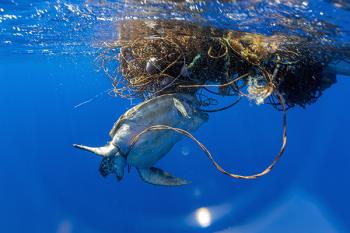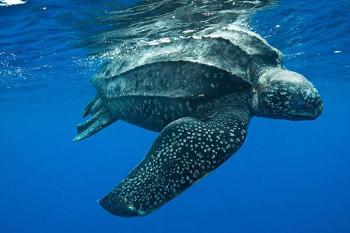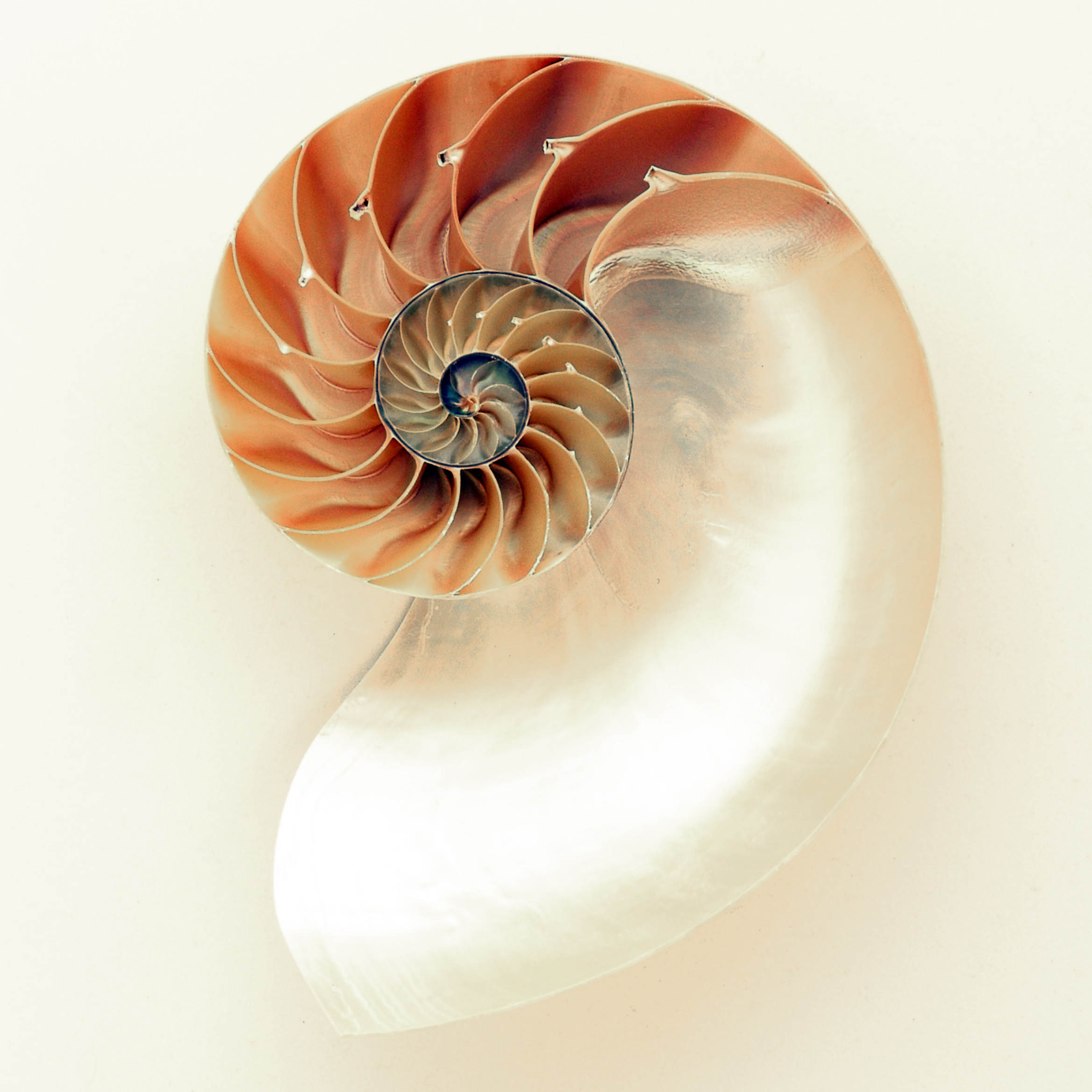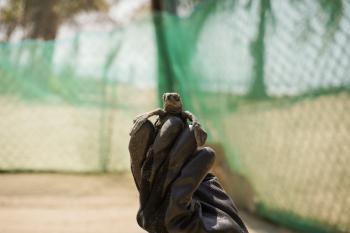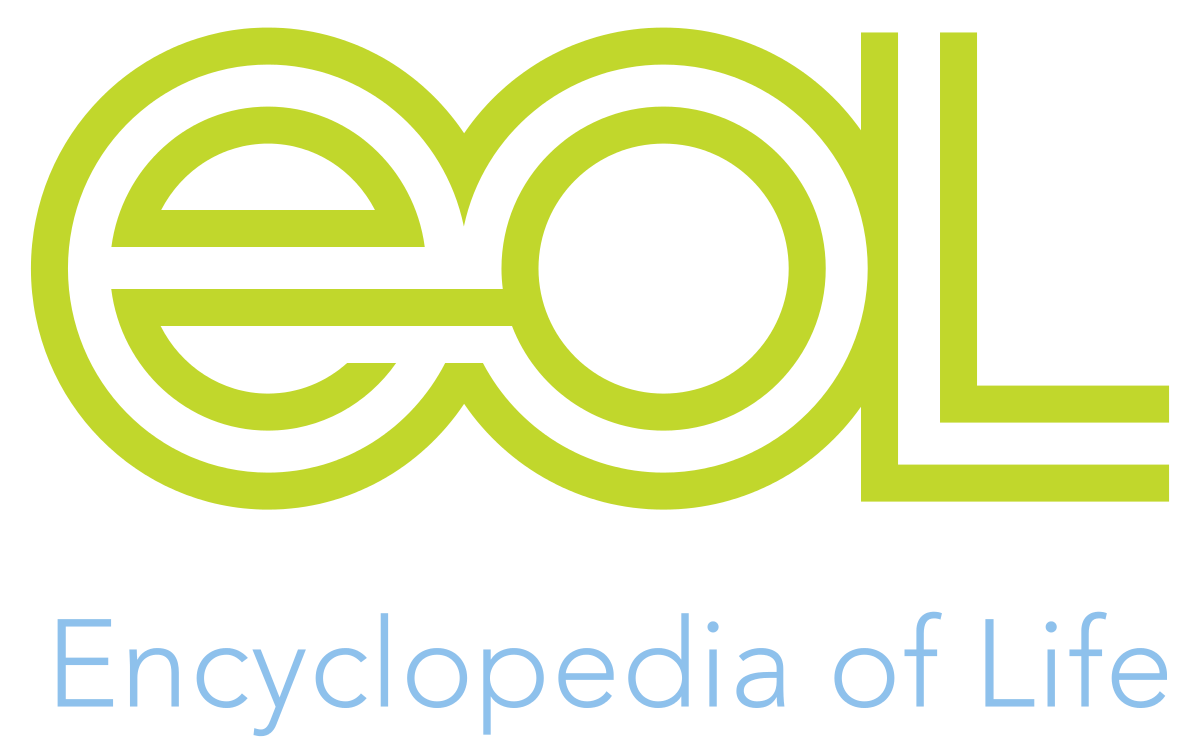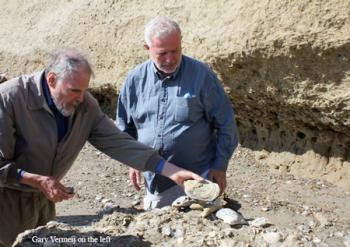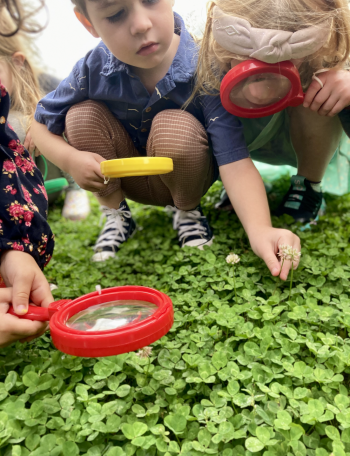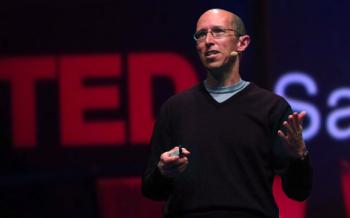Sharing His Passion for Fossils
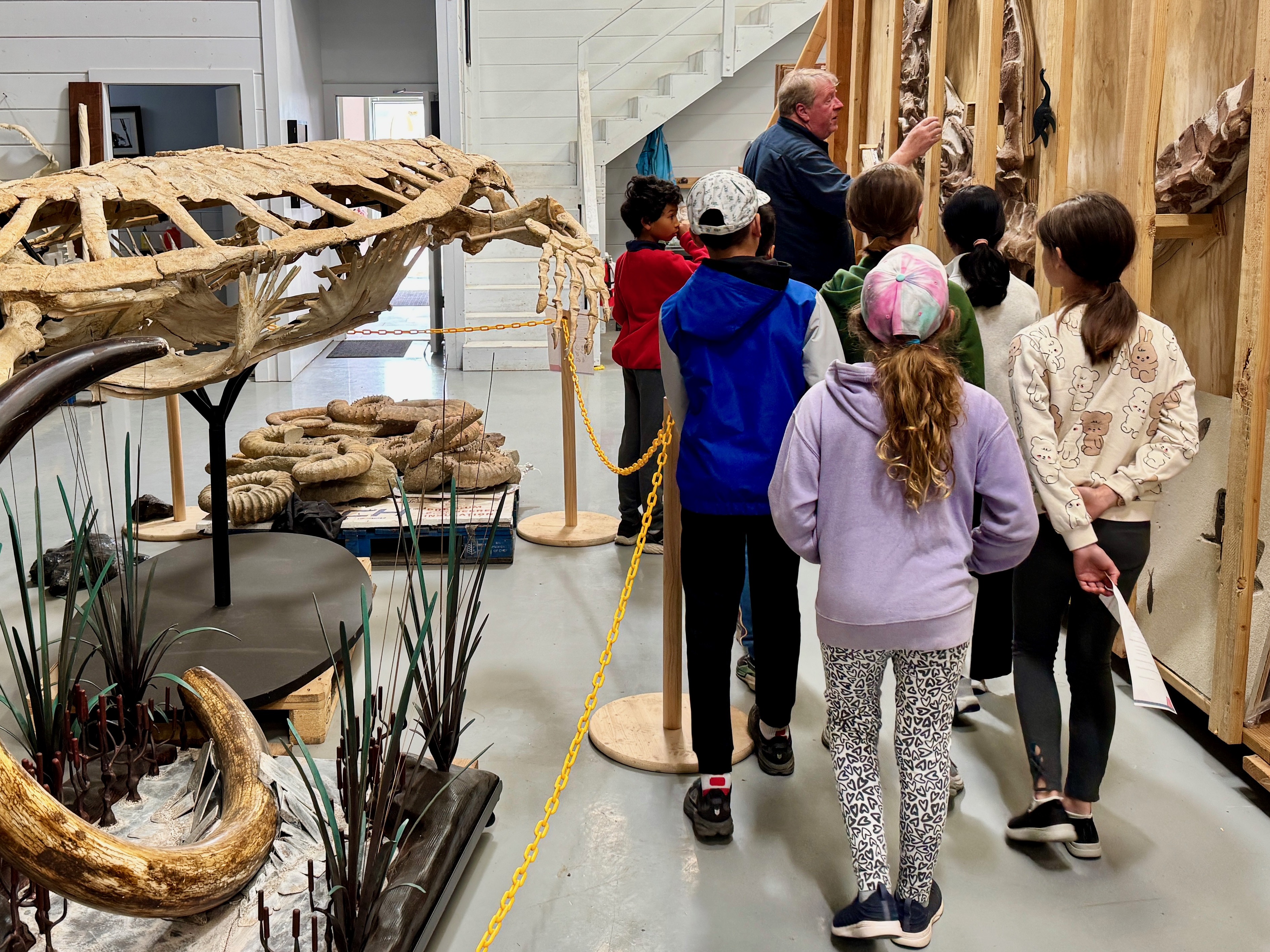
John Gregg’s classroom is a giant warehouse where everyone is welcome. The scope of John’s fossil collection takes your breath away. The best part is that John shares stories about all the fossils. Mollie is one of his favorites. She is a rare fossil of an ancient sea turtle, like a leatherback that would eat ammonites. She even has a mosasaurus bite in her shell.
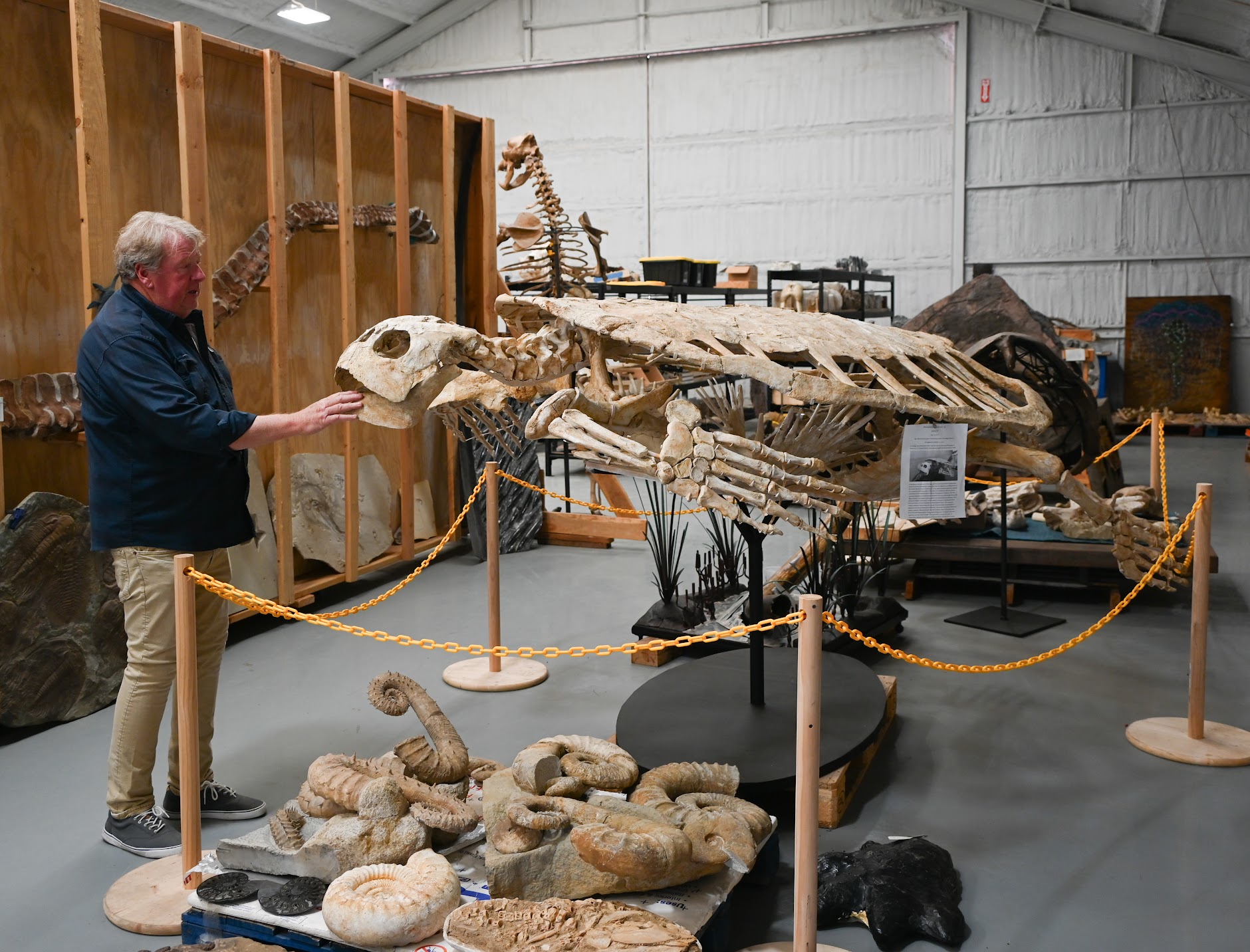
Heteromorphs were exceptionally large ammonites living at a time when cephalopods ruled the ocean. A shelled cephalopod descended from those ancient ammonites still lives today: the chambered nautilus.
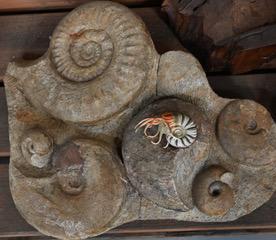
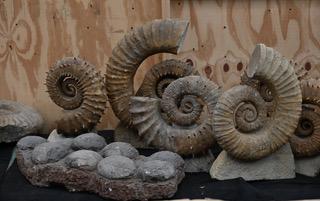
Always Open to Learn About Fossils
John encourages visitors to touch the fossils and laughs at fabricated plastic models. In addition to opening his collection to everyone, John makes fossil kits for teachers. There is no schedule for John’s teaching. He answers questions and tells stories and engages visitors in what interests them whenever they arrive.

John points out the actual fossil Orthoceras, which is the white ring-like structure. The rock matrix preserving the fossils is nearly identical to the fossils themselves. It is an artistic process chiseling rock to expose the fossils. The black shape is a rock matrix made to look like an animal. The preparers use hand tools to chisel out a spot to replicate the look. Every month, on the new moon, these animals sealed off another gas chamber which appears as rings in the fossil. Counting the rings tells you the animals age when it died.
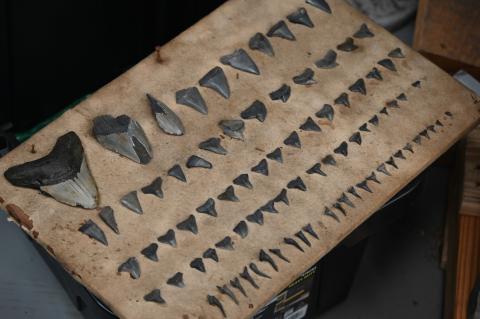
It All Started with Shark Teeth
The shark’s teeth that John found on the beach in Georgia as a child were the beginning of his lifelong curiosity and passion for fossils. He is still proud of this collection.
John had a career in Geotechnical Engineering and eventually started a drilling company that sampled on and offshore for environmental contaminants. They even drilled at DDT sites. John is currently involved in the design and implementation of deep-sea sampling systems at great depths in oceans around the world. This career allowed him to travel and to see fossils everywhere. He took his kids to digs when they were young. He noticed that putting the fossils in containers sparked people's curiosity. That was the start to what John shares today in his warehouse.
Drawing with 100-million-year-old ink
John has both squid and cuttlefish fossils and one with fossilized ink sacs. This fossil ink occupied his thoughts for a long time. He wanted to reconstitute the 100-million-year-old ink. He tried to hydrate the squid ink with mineral oil and solvents with no luck. Then he tried ammonia, which squid have in their tissues. Success! It flowed like ink. The images below show both the drawing made with the fossil squid ink and the fossil itself.
This is a video of John extracting the ink from the squid fossil and drawing. It's amazing.
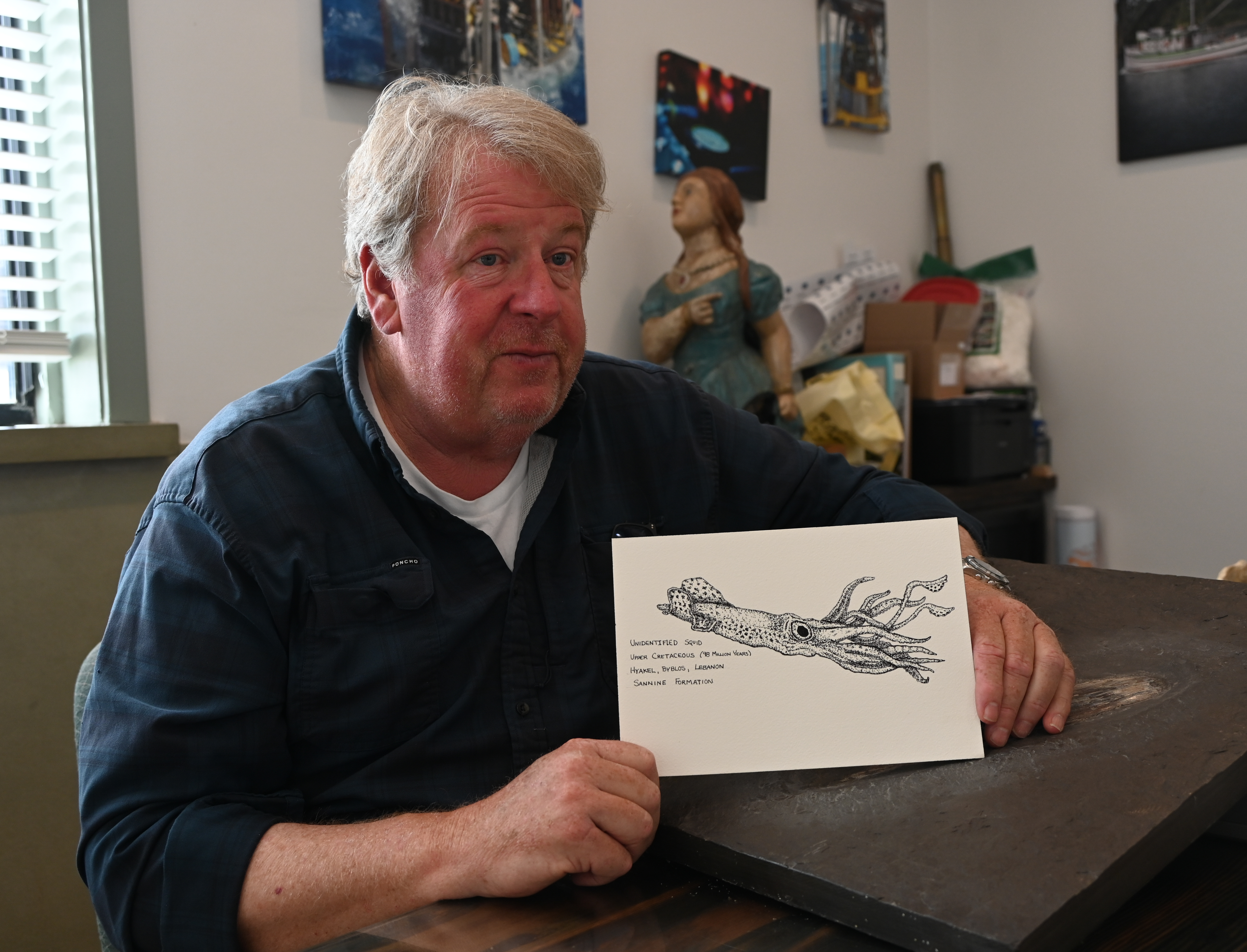
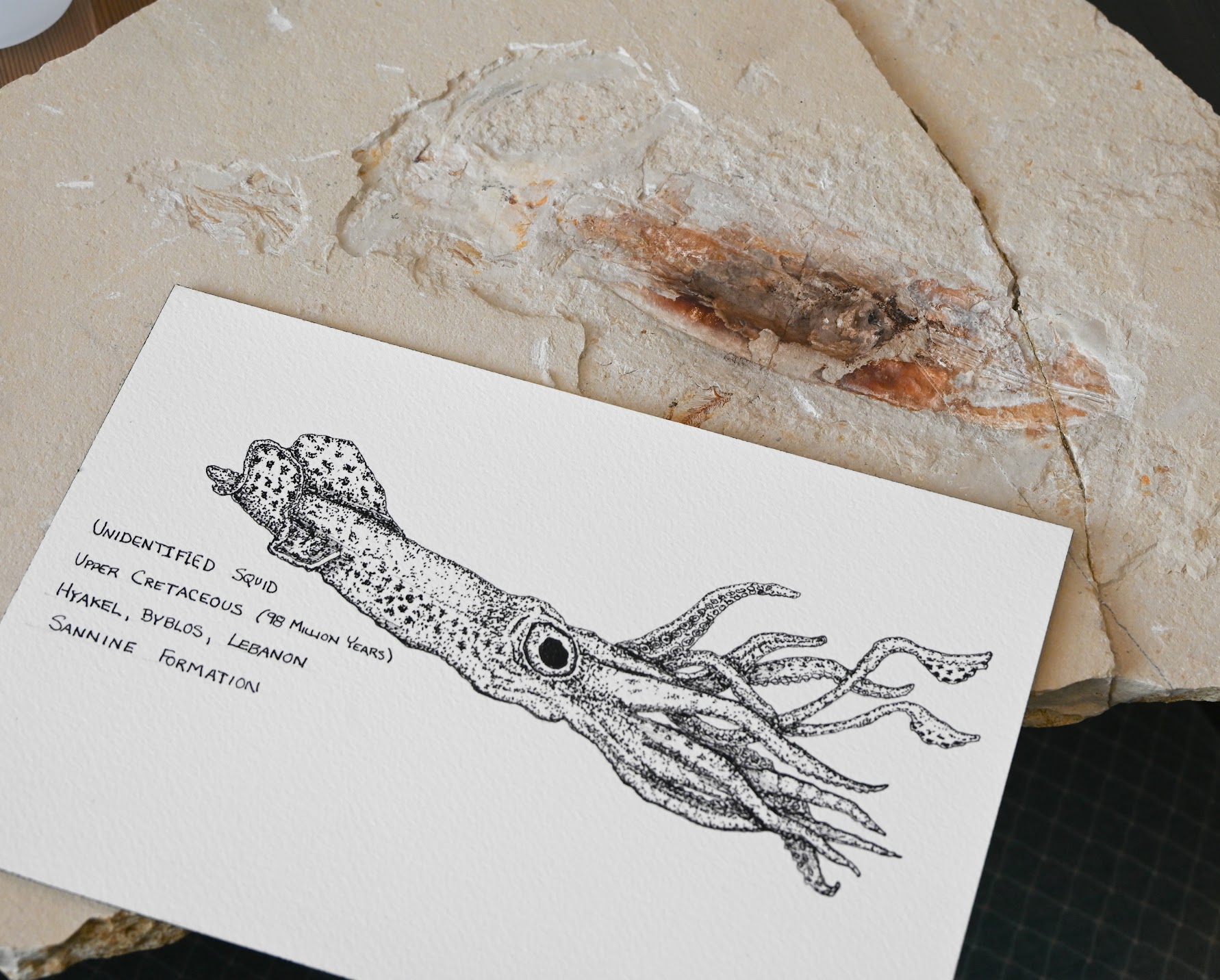
The Western Flyer Foundation
As a child John visited a Bookmobile (established by Jackie Kennedy) and took out five books in the five minutes allowed. They were all ocean and adventure books. That’s when he first read the Log of the Sea of Cortez by John Steinbeck and Ed Ricketts. That book stayed with him. John looked for their expedition boat, the Western Flyer, for years. Captain Tony, from the original expedition, suggested he look up call numbers of the boat. And he found it and tried for years to raise money to buy it. John was finally able to buy the boat, refurbish it, and started the Western Flyer Foundation, continuing his lifelong love of the Log of the Sea of Cortez. The Western Flyer Foundation’s Mission: “To stir curiosity through marine research, education, and a blend of science and art inspired by John Steinbeck, Ed Ricketts, and their journey on the Western Flyer.” The Vision: “We share Steinbeck and Ricketts's vision of an interconnected world, where species are bound together, and curiosity about life is an abiding source of inspiration to understand and protect it.”
Students visit the Western Flyer at dock to see research in the ship’s lab. They do scientific journaling there. Some programs take students to sea to help with research. After these programs, many lucky students visit John’s fossil warehouse.
You can follow The Western Flyer here.
